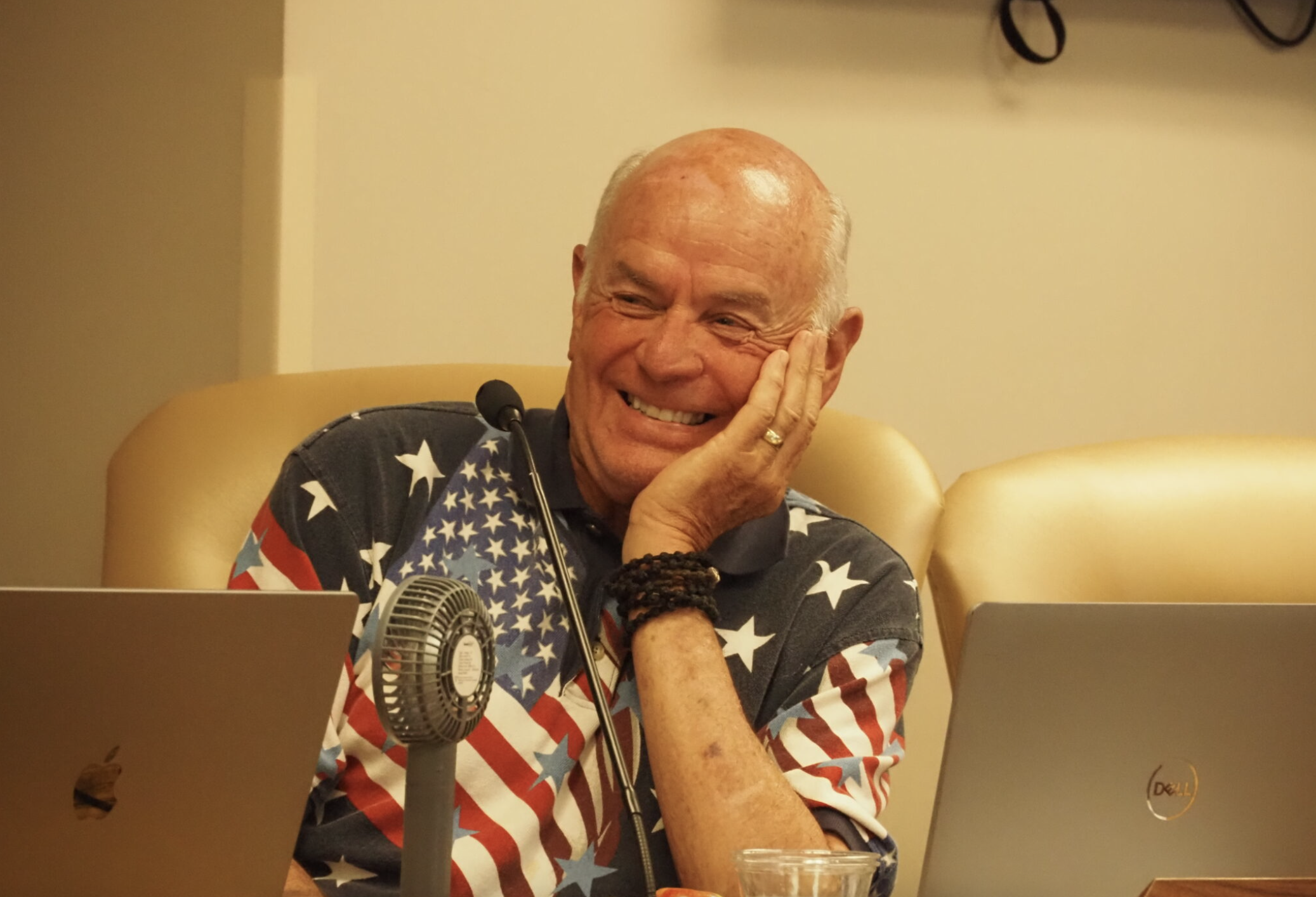
Danny Zeck, a member of the Kansas State Board of Education, appears at a July 8, 2025, board meeting. (Anna Kaminski/Kansas Reflector)
BY: ANNA KAMINSKI
Kansas Reflector
TOPEKA — Judith Deedy said there’s been a disconnect for a decade in Kansas’ student assessment scores.
Her oldest child once earned fives — the highest level at the time — until 2015, when she began scoring at level three after the assessment scores changed.
“The Kansas assessment has persistently been an outlier for all of the three children in my own family and for thousands of students across the state, as data has shown,” Deedy, a public education advocate, said at a Tuesday meeting of the Kansas State Board of Education.
State assessment scores have shown a steady increase in the number of Kansas students scoring lower on math, science and English language arts tests since 2016, while achieving marks of post-secondary success, such as higher education degrees and military careers.
The state education board voted 7-3 on Tuesday to change assessment cut scores in the 2025-2026 school year, broadening the scoring range and shrinking the tests. Board members Michelle Dombrosky, Connie O’Brien and Debby Potter voted against resetting the scores.
In partnership with the University of Kansas and with input from nearly 150 educators, the Kansas State Department of Education crafted new metrics for the assessment tests students periodically take in English language arts, math and science throughout their school careers.
Cut scores divide performance levels, reflecting student achievement.
Following the board’s vote, cut scores are undergoing an expansion. Previously, the scoring scale ranged from 220-380, with cutoffs varying by grade, level and subject.
Now, the lowest obtainable score is 400 across all grades and subjects, and the highest is 700. Level two cuts off at 510, and the level three cutoff is 540 for all grades and subjects. The level four cutoff varies by grade and subject.
In May, the board approved new performance definitions for each level. Previously, scores fell into the following levels: limited, basic, effective and excellent. Now, “limited” and “basic” remain for levels one and two, but “effective” was changed to “proficient” and “excellent” to “advanced.”
Beth Fultz, director of career standards and assessment services for the education department, addressed the board before its vote. She said it “was an opportunity to impact Kansas education for several years to come.”
Beryl New, a board member from Topeka, said she has heard from constituents who are concerned the state education department is lowering standards.
Fultz responded that the change is more of a realignment of expectations for student performance.
“I do believe we are not reducing the rigor on this assessment,” Fultz said.
The state education commissioner, Randy Watson, said the department brought to the table “a scientifically based process that’s nationally recognized,” and came from the voices of teachers. He assured the board that the new scores still set the highest expectations for Kansas kids.
Deedy, who spoke during the board’s public forum section at the beginning of the meeting, said the old cut scores overshot a desire to be aspirational.
“Adjusting cut scores is not lowering our standards,” Deedy said, ”but rather improving the predictability and reliability of this point-in-time assessment to more accurately reflect student achievement levels.”
Danny Zeck, a board member from Leavenworth, said he struggles with assessments. He said he was once what he called “a level one kid.”
Zeck, following a long pause, said: “The problem I have with level one, two, three and four is that level one person wakes up sometime and they’re gonna be successful.”
Everybody reacts differently, he said.
He also encouraged parents, if they do not agree with the new cut scores, to exempt their students from participating in assessments.
“C’mon, people,” he said. “If you really dislike it, opt them out. It’s not a rocket science deal.”








